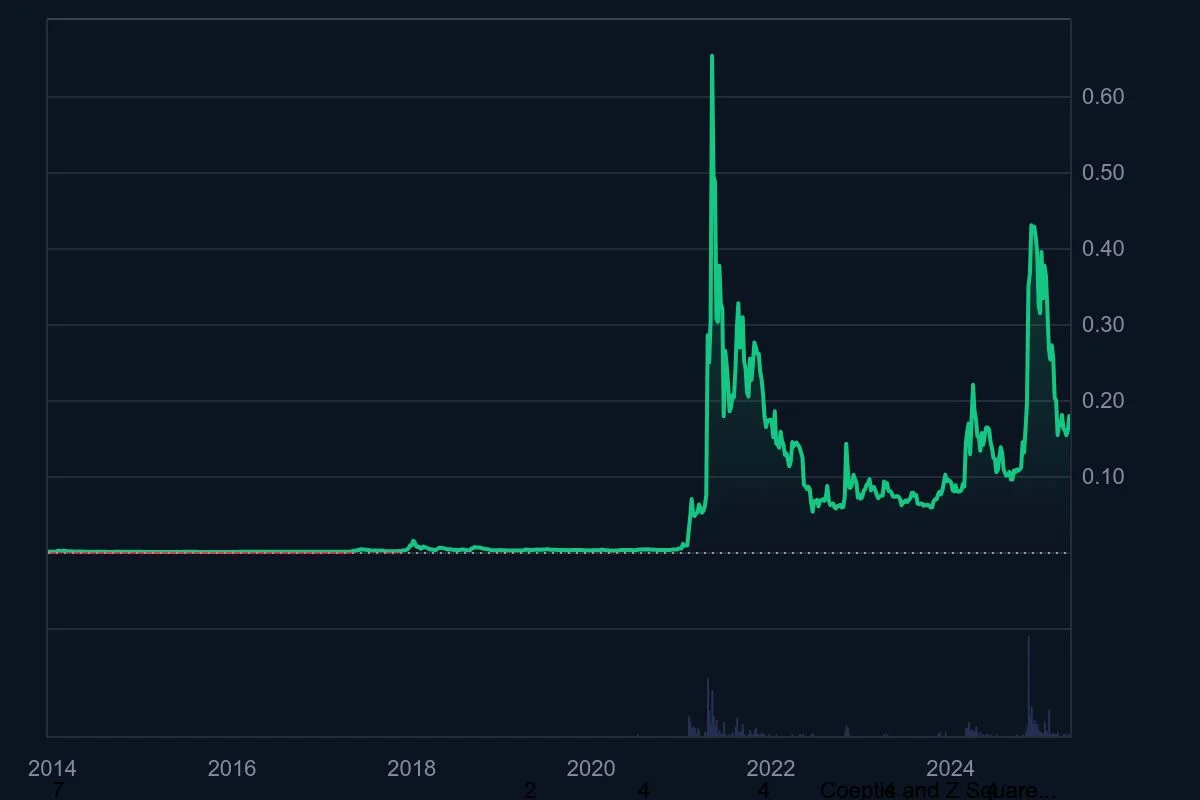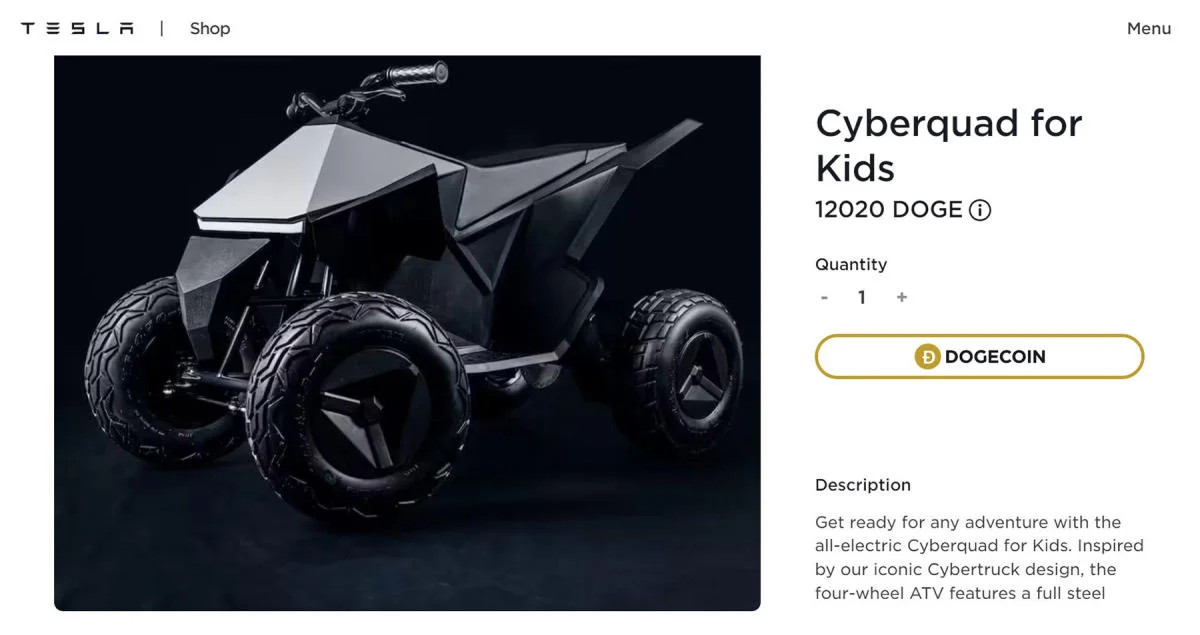When you think of cryptocurrency, Bitcoin or Ethereum may immediately come to mind. But Dogecoin, which was born from a dog's udder and has reached a market value of billions of dollars over time, is the hero of one of the most colorful stories of this world. So what exactly is Dogecoin? How was this cute Shiba Inu-themed currency born, why has it attracted so much attention and what place does it have in the crypto world today? Let's take a look at Dogecoin's story together.
First, let's give a short answer to the question of what is Doge coin: Dogecoin (Doge for short) is a cryptocurrency based on the Shiba Inu dog meme, created in 2013 by computer engineers Billy Markus and Jackson Palmer. (Sometimes spelled “Doge coin”.) So, what is a meme coin? Well, these coins are pop culture-themed joke coins. Dogecoin is the first and most famous example that fits this description. Dogecoin's cute logo was inspired by the Japanese Shiba Inu dog Kabosu.
Definition and Emergence of Dogecoin
Dogecoin is, as its name suggests, the product of an internet prank. The cute Shiba Inu dog in its logo, Kabosu, is at the center of this story. Kabosu, who was adopted by a kindergarten teacher in Japan, went viral on the internet and captured the hearts of millions with his humorous expression. Dogecoin was born by bringing the fame of this internet phenomenon to the cryptocurrency world. In other words, Dogecoin is literally a Shiba Inu-themed coin.

Dogecoin burst onto the scene in late 2013. The answer to the question “When was Dogecoin released?” is December 6, 2013. When it was first released, the initial price of Dogecoin was only around 0.00008547 dollars. It was so cheap that mining Doge with simple graphics cards of the time became an internet sport. While talking about mining, it is also worth mentioning the issue of staking. Because the question “Is there Dogecoin staking?” is very curious. Since Doge is a currency produced by mining (Proof-of-Work), it is not possible to generate passive income by staking. New Doge goes to miners in exchange for block production.
The low price and the humorous tone of Dogecoin have made it more popular with users who want to have fun and experience a sense of community than serious crypto investors. In fact, in its first month, Dogecoin's official website attracted more than one million visitors. Thus, Doge, which was born from a joke, quickly turned into a real cryptocurrency phenomenon. Even Jackson Palmer couldn't hide his surprise at this growth; he didn't expect the project, which he initially thought was just a little joke, to grow so much.
Dogecoin's History: Key Milestones
When we look at Dogecoin's bumpy journey, we can clearly see how an internet joke turned into a giant crypto asset over time. Doge, which nobody took very seriously when it first started, has grown and flourished over the years thanks to the energy and humorous spirit of its community and the impact of social media, which has come into play from time to time. Here is the history of Dogecoin...
- In 2013, DOGe launched: Dogecoin was officially launched; it started as a dog joke but quickly gained traction. Doge's posts on forums like Reddit and BitcoinTalk went viral, attracting millions of visitors to the site in the first month. In fact, Doge became so popular that it surpassed Bitcoin in daily trading volume within the first two weeks of its launch.
- Support for the Jamaican Bobsled Team in 2014: The Dogecoin community showed its generosity. 26.5 million Doge (about $30,000) was raised to support the Jamaican Bobsled Team for the Sochi Winter Olympics. In the same year, 40 million Doge was donated for clean water projects in Kenya. Such crypto donation campaigns showed the benevolent side of the Doge community and won hearts online.
- The years 2015-2020 were characterized by silence: Doge was relatively quiet during this period. It saw some limited movement during the crypto bull run in 2017, but failed to catch up with Bitcoin and other major coins. While the price remained low, the Doge community remained and the Dogecoin culture was not forgotten.
- In 2021, the Elon Musk storm hit - the price hit a record high: Elon Musk's X (formerly Twitter) posts put Doge on the world's agenda. Thanks to Musk's humorous Dogecoin tweets, the Dogecoin price skyrocketed; on May 8, 2021, DOGE hit an all-time high of $0.73. While everyone was asking, “Why has Dogecoin soared?” they found the answer in Musk's social media outreach. For example, when Musk made a joke about Doge on SNL, the price was quite volatile. Also in 2021, the Dogecoin Foundation was restructured and a roadmap for the future was set. The Dogecoin price has seen major movements since 2021. As you can see in the all-time chart below, the biggest meme coin was very quiet between 2013 and 2021.
-

- What happened in 2022-2024: The Doge community continued to grow and Dogecoin slowly began to be adopted as a payment method. An NBA team and various e-commerce sites tested Doge as payment. On social media, for every Elon Musk or celebrity Doge tweet, there was a Dogecoin Twitter effect. On the other hand, the Dogecoin Foundation and its developers worked on projects to make Doge more useful.
- 2025 was marked by Dogebox, Grayscale Dogecoin Trust and mining growth: So far, 2025 has been a year of serious strides for Dogecoin. The Dogecoin Foundation developed a decentralized payment infrastructure called Dogebox that makes it easy for businesses to get paid directly in Dogecoin. Users are very excited about this Dogecoin payment system. Around the same time, Grayscale launched the Grayscale Dogecoin Trust investment fund, making Dogecoin more accessible to institutional investors. There was also an important merger in the Dogecoin mining space; Z Squared and Coeptis joined forces to expand Dogecoin mining.
Why is Dogecoin valuable?
At first glance, Dogecoin may seem like an internet joke, but over time, Dogecoin has created its own unique community, use case and cultural value, and has managed to gain a permanent place in the cryptocurrency world. Today, Doge is more than just a fun project; it offers real value thanks to both its technological infrastructure and the strong support behind it. So what sets Dogecoin apart from the others and what makes it so valuable? Let's take a look together:
- Large community: Doge has a huge and passionate Doge community behind it. People continue to joke about and support Doge on social media. For example, the Doge community is connected through forums, Discord and meme contests. This vibrant community keeps Dogecoin in the spotlight.
- The Elon Musk effect: Tesla boss Elon Musk's support for Doge is making a big difference. Musk's frequent Doge tweets and even accepting payments with Doge at the Tesla store have increased Doge's recognition. In short, the attention brought by the Dogecoin Elon Musk relationship is driving up the value of Doge. It seems that Musk likes Doge's exuberance and popularity; every Doge tweet he shares excites the community.

- Micropayments and tipping: This coin is ideal for small payments and digital tips thanks to its low fees and fast transactions. For example, it's possible to send a few hundred Doge to creators on Twitch or YouTube with zero commission. In the past, on platforms like Reddit, people used to tip their favorite content by sending Dogecoin (the DogeTipBot era), which turned Doge into a fun reward currency. This kind of usage increases Doge's popularity. It also answers the question, what is Doge coin good for?
- Fast and cheap transactions: Dogecoin gets transaction confirmation much faster than Bitcoin and has very low commissions. With a single click, your money can be gone in seconds and you don't have to worry about network congestion or fees. This practicality makes Doge the preferred choice for small transactions such as microcredit.
- Memecoin pioneering and cultural phenomenon: Dogecoin was the first major memecoin, giving birth to others like it. Shiba Inu inspired the launch of new memecoins like Baby Doge. In the crypto world, Doge is often the first answer to the question “what is a meme coin?”. Doge's pioneering has made it not just a crypto coin, but a phenomenon. Doge has also become an internet phenomenon, not just a cryptocurrency. Images of the dog in the logo are on T-shirts, mugs and stickers; slogans like “much wow, very coin” have gone viral on social media.
- Payment acceptance: Dogecoin's availability is also growing. Some online stores, restaurants and services are accepting Doge payments. The NBA team Dallas Mavericks, for example, offers the option to pay for tickets and merchandise with Doge. In addition, electronics retailer Newegg, airline AirBaltic, travel booking platform Travala.com and luxury fashion brand Gucci have begun accepting Dogecoin payments at select stores. In addition, thanks to platforms such as Bitrefill, users can buy gift cards with Dogecoin and indirectly shop at many big brands.
-

Tesla enables DOGE payments. - Famous supporters Dogecoin has also attracted some well-known names outside of Elon Musk. Celebrities such as rock musician Gene Simmons, rapper Snoop Dogg and French soccer player Antoine Griezmann occasionally share Doge. It is also known that Mark Cuban, the billionaire jury member of Shark Tank, openly supports DOGE. Because the Dallas Mavericks, which we mentioned above, is Mark Cuban's team.
Who is the Founder of Dogecoin?
So, who is the founder of Dogecoin? There are two creative names behind Dogecoin: Billy Markus and Jackson Palmer. Markus was working as a software engineer at IBM at the time, while Palmer was working in marketing at Adobe. The duo wanted to add a bit of humor to the “storm of seriousness” that was blowing through the world of cryptocurrencies at the time. So they launched Dogecoin as a fun project that combined both internet humor culture and crypto technology.
Interestingly, Dogecoin was initially a joke project. Palmer saw the Doge meme and thought “how funny would it be if there was a coin”, then Markus took the idea and turned it into serious software. Palmer even announced the official launch of Dogecoin on Twitter, saying it was “just a joke”. But things grew much faster than they expected. In a matter of weeks, Doge went viral on platforms like Reddit and Twitter, people started the Dogecoin community, and miners started supporting the network.
In the beginning, everything was humorous, no one fully realized that a serious financial asset was being created. But over time, as Dogecoin grew to multi-million dollar transaction volumes, a huge community and media attention, the pressure on the founders increased. Both the technical responsibilities and the expectations drained Markus and Palmer's energy. In 2015, both founders announced their complete withdrawal from the project. Billy Markus explained Doge's dizzying journey a bit bitterly, saying that he was able to sell his Dogecoins and earn a small enough sum to buy a second-hand Honda Civic.
The founders' departure from the scene did not mark the end of Dogecoin, but rather a turning point. Dogecoin became a fully community-owned asset. Code contributions, fundraisers and social media efforts no longer came from a centralized leadership, but from volunteer Doge fans. Dogecoin literally became a decentralized, community-driven project. Today, the community itself is the main force driving Dogecoin's course. It has no CEO, centralized management or company; Dogecoin continues to run on the energy of the community as a fun cryptocurrency.
Frequently Asked Questions (FAQ)
Below, you can find answers to your questions about Dogecoin, the longest-established and largest meme coin:
- What is Dogecoin and how did it come to be? Dogecoin is a fun cryptocurrency known as a Shiba Inu-themed meme coin. It was created in 2013 by software engineer Billy Markus and Adobe employee Jackson Palmer as a joke. At first, it was used as a digital tipping tool among users because its value was so low. Over time, it became surprisingly popular, gained a large community, and has continued to evolve while maintaining its “fun and friendly” identity.
- Who founded Dogecoin? The founders of Dogecoin are Billy Markus and Jackson Palmer. Markus was working at IBM at the time, while Palmer was working at Adobe. The duo launched Doge as a joke project in 2013. After Doge's unexpected success, the duo withdrew from the project and Dogecoin evolved into a fully decentralized community-run structure. Jackson Palmer initially thought Doge was just an experiment, but watched in amazement as the project grew into a serious community.
- Is Dogecoin suitable for investment? Dogecoin is a high-risk investment. Its price rises and falls frequently depending on social media attention, celebrity mentions and market fluctuations. It can lead to big gains in a very short period of time, but it can also lead to big losses at the same speed. For this reason, it is generally recommended that traders allocate only a small portion of their portfolio to Doge. Remember that Doge is basically a coin based on community enthusiasm and speculation.
- Why does Elon Musk support Dogecoin? Elon Musk seems to be making fun of Dogecoin, but he's actually a big Doge supporter. Accepting payments with Doge at Tesla and making fun posts on X have raised Doge's profile. It seems that Musk likes the cheerful and popular aspects of Doge; every post he makes brings Doge back to the agenda. In short, Musk is supporting Doge's fun crypto identity and getting the community excited.
- How to buy and hold Dogecoin? You can use cryptocurrency exchanges such as Binance, Coinbase, Kraken to buy Dogecoin. On these exchanges, you can buy DOGE for TL or other cryptocurrencies. You can use a wallet to store your Doge coins. Software wallets that you can download for both your computer and phone (such as MultiDoge, Trust Wallet, etc.) or hardware wallets such as Ledger/Trezor support Dogecoin. However, do not forget to safely store the seed words given to you when installing the wallet. In addition, Doge is listed on many major crypto exchanges in our country and can be traded in Turkish Lira.
- Is Dogecoin supply limited? No, the total supply of Dogecoin is unlimited. Unlike Bitcoin, which is limited to 21 million, Doge has no maximum amount. Since 10,000 new Doge are created in every block, the amount of Doge in circulation is constantly increasing. This makes Doge an inflationary cryptocurrency. For example, Doge has an annual inflation rate of around 5%, which is considerably higher than Bitcoin's fixed supply policy. In the long run, not only the supply-demand balance, but also Doge's popularity and use cases affect its value.
Explore our JR Kripto Guide series to learn more about Dogecoin and other community-based projects!